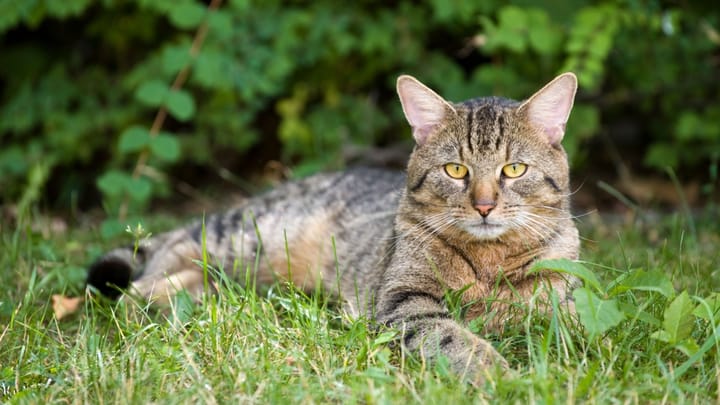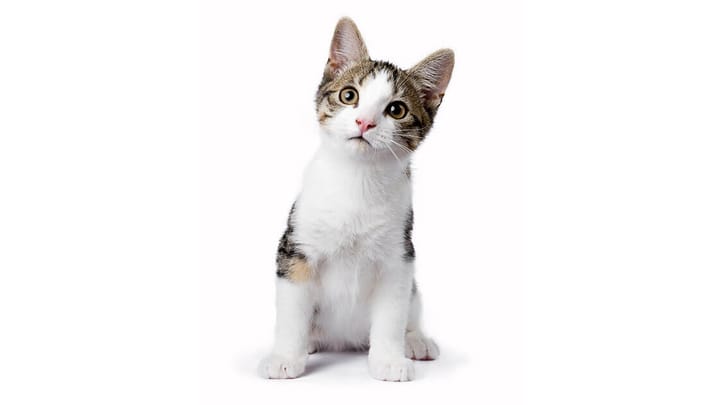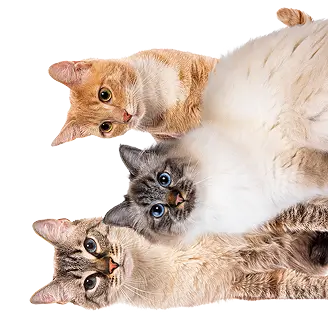European Shorthair
Other names : European, Domestic shorthair cat


Distinguishing a European from a simple ‘moggy’ or alley cat is not an easy task. The latter can look like the former in every way. However, this breed is one of the oldest. Its origins go back to antiquity, more specifically to ‘Felis Silvestris Libyca’. Born in Egypt, these cats were adopted by the Greeks and Romans who spread them across Europe, so that today they are the most popular cat on the European continent. Formerly used to guard grain silos, they are now simply kept as pets.
|
Life expectancy |
The European Shorthair has a life expectancy of between 13 and 18 years |
|
Temperament |
|
|
Adult size |
Female
Between 10 and 12 in
Male
Between 12 and 14 in
|
|
Adult weight |
Female
Between 7 and 11 lb
Male
Between 9 and 15 lb
|
|
Coat colour
Black / seal, blue / slate grey, red, white. Cinnamon, chocolate, fawn and lilac are the only colours not permitted. |
Black White Red Blue |
|
Type of coat
Short |
Short |
|
Eye colour
Orange, golden yellow, green. |
Blue
Green
Yellow
Odd-eyed
|
The European is most popular in the countries of Northern Europe!
More details about the European Shorthair
European Shorthair: Origins and history
The European Shorthair’s ancestor is the ‘Felis Silvestris Libyca’, of Egyptian origin. Adopted since antiquity by Greeks and Romans, it spread throughout Europe. They were first admired for their hunting skills, which enabled them to control rodent populations in grain silos. Next came a period of bad luck during the witch hunts, because of the superstitions of the time.
Since these cats are seen as very common and devoid of any particular characteristics, they have always been free to reproduce as they see fit (that is, for non sterilised individuals!). It wasn’t until recently, in 1983, that the breed became recognised, and it was only in 2007 that the breed was named the European.
Physical characteristics of the European Shorthair
The European is simply defined as the cat breed that doesn’t look like any others. They just mustn’t have the same characteristic traits as other breeds, which leaves a lot of room for morphological differences between individuals.
They are of average size and famously robust, with short, dense fur. To be recognised by the GCCF (British Feline Association), the body must be rectangular in shape. Their heads are quite round, with prominent cheeks. Their eyes can be medium to large in size. The length of their ears is the same as their width at the base, with tips that are slightly rounded. Their tails are quite broad at the base, and tapers to the tip.
European Shorthair: Characteristics
European Shorthair: Behaviour
Breed compatibility European Shorthair
European Shorthair: Purchase price
They aren't enough data to establish an average price for a European Shorthair. But the cost for a GCCF-approved European Shorthair will vary according to lineage, breeding, age or even sex.
For your monthly budget, you should allow on average £25 per month to cater to this cat’s needs, by offering them a quality diet and ensuring they stay healthy.
European Shorthair: Shedding
Average
During moult periods (one in spring and a short one in autumn), a daily brush will allow you to get rid of the undercoat that would otherwise be ingested by the cat as they groom themselves. This avoids a buildup of hairballs in their digestive tract, which can sometimes require veterinary intervention to unblock it.
European Shorthair: Grooming
A routine brush each week is enough for the European Shorthair.
European Shorthair: Health
The average life expectancy is estimated to be about a dozen years, although it’s fairly common to see cats that are 16 or 18, or in exceptional cases, even 20 years old.
The European is known to whether well. As a general rule, they will withstand the cold better than too much heat!
Excess weight and obesity are unfortunately the most common condition affecting this breed. The factors leading to excess weight can be individual, environmental, or a combination of the two.
Where individual factors are concerned, the first to consider is the effects of sterilisation and of gender, with males sometimes being more susceptible to chubbiness than females. However, feeding behaviour is obviously just as important: there’s no denying the difference in body condition of a cat that nibbles and a cat that guzzles. Age is also a factor, and the cat will age much better if they are not overweight, as obesity increases the risk of developing other conditions that prevent a long life.
When it comes to the environment, lifestyle is important: any physical activity should be encouraged, both indoors and outdoors. The presence of other animals can also affect food intake. The quality of food is obviously paramount, as is the behaviour of the person feeding the cat.
For all of these reasons, the use of interactive bowls is highly recommended.
European Shorthairs generally have sturdy health. They have no predisposition to particular conditions (apart from the weight gain mentioned above), though they are still susceptible to the same illnesses as all other cats. They have a certain vulnerability to periodontal disease (gingivitis and tartar). Prevention and dental care are recommended. If they have outside access, it’s best to vaccinate them against infectious diseases such as coryza, acute leukaemia, rabies and typhus, according to veterinary advice.
Contrary to most breeds, whose reproduction has been controlled to select certain morphological, aesthetic or behavioural traits, Europeans have not undergone this process. The breed is of natural origin, which distinguishes them from the vast majority of other breeds.
Pairings with other breeds are not authorised because the specificity of the European is that it must not resemble any other breeds.





